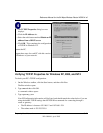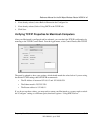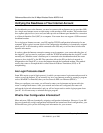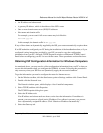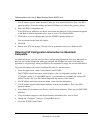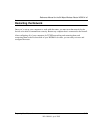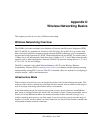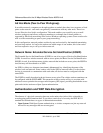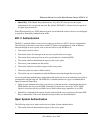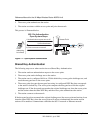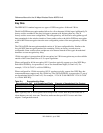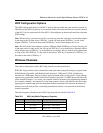
W ireless N etworking Basics D -1
202-10099-01, April 2005
Appendix D
Wireless Networking Basics
This chapter provides an overview of Wireless networking.
Wireless Networking Overview
The WGR614 v6 router conforms to the Institute of Electrical and Electronics Engineers (IEEE)
802.11b and 802.11g standards for wireless LANs (WLANs). On an 802.11b or g wireless link,
data is encoded using direct-sequence spread-spectrum (DSSS) technology and is transmitted in
the unlicensed radio spectrum at 2.5GHz. The maximum data rate for the 802.11b wireless link is
11 Mbps, but it will automatically back down from 11 Mbps to 5.5, 2, and 1 Mbps when the radio
signal is weak or when interference is detected. The 802.11g auto rate sensing rates are 1, 2, 5.5, 6,
9, 12, 18, 24, 36, 48, and 54 Mbps.
The 802.11 standard is also called Wireless Ethernet or Wi-Fi by the Wireless Ethernet
Compatibility Alliance (WECA, see http://www.wi-fi.net), an industry standard group promoting
interoperability among 802.11 devices. The 802.11 standard offers two methods for configuring a
wireless network - ad hoc and infrastructure.
Infrastructure Mode
With a wireless Access Point, you can operate the wireless LAN in the infrastructure mode. This
mode provides wireless connectivity to multiple wireless network devices within a fixed range or
area of coverage, interacting with wireless nodes via an antenna.
In the infrastructure mode, the wireless access point converts airwave data into wired Ethernet
data, acting as a bridge between the wired LAN and wireless clients. Connecting multiple Access
Points via a wired Ethernet backbone can further extend the wireless network coverage. As a
mobile computing device moves out of the range of one access point, it moves into the range of
another. As a result, wireless clients can freely roam from one Access Point domain to another and
still maintain seamless network connection.



